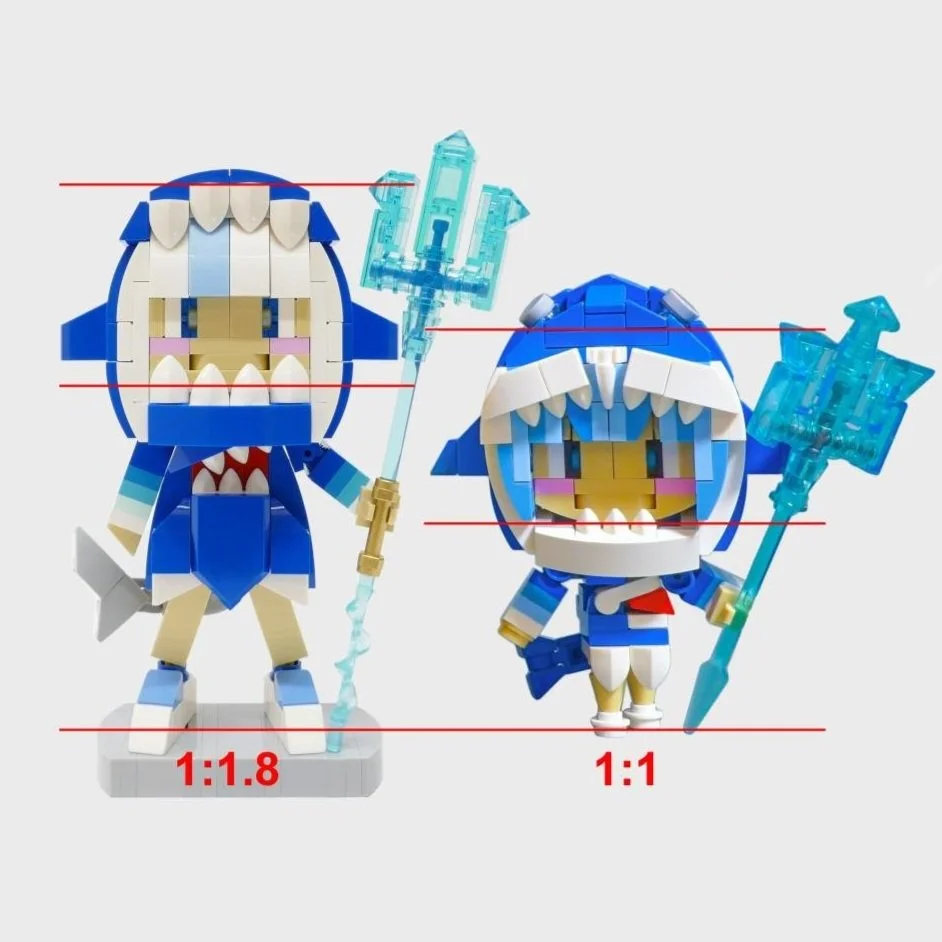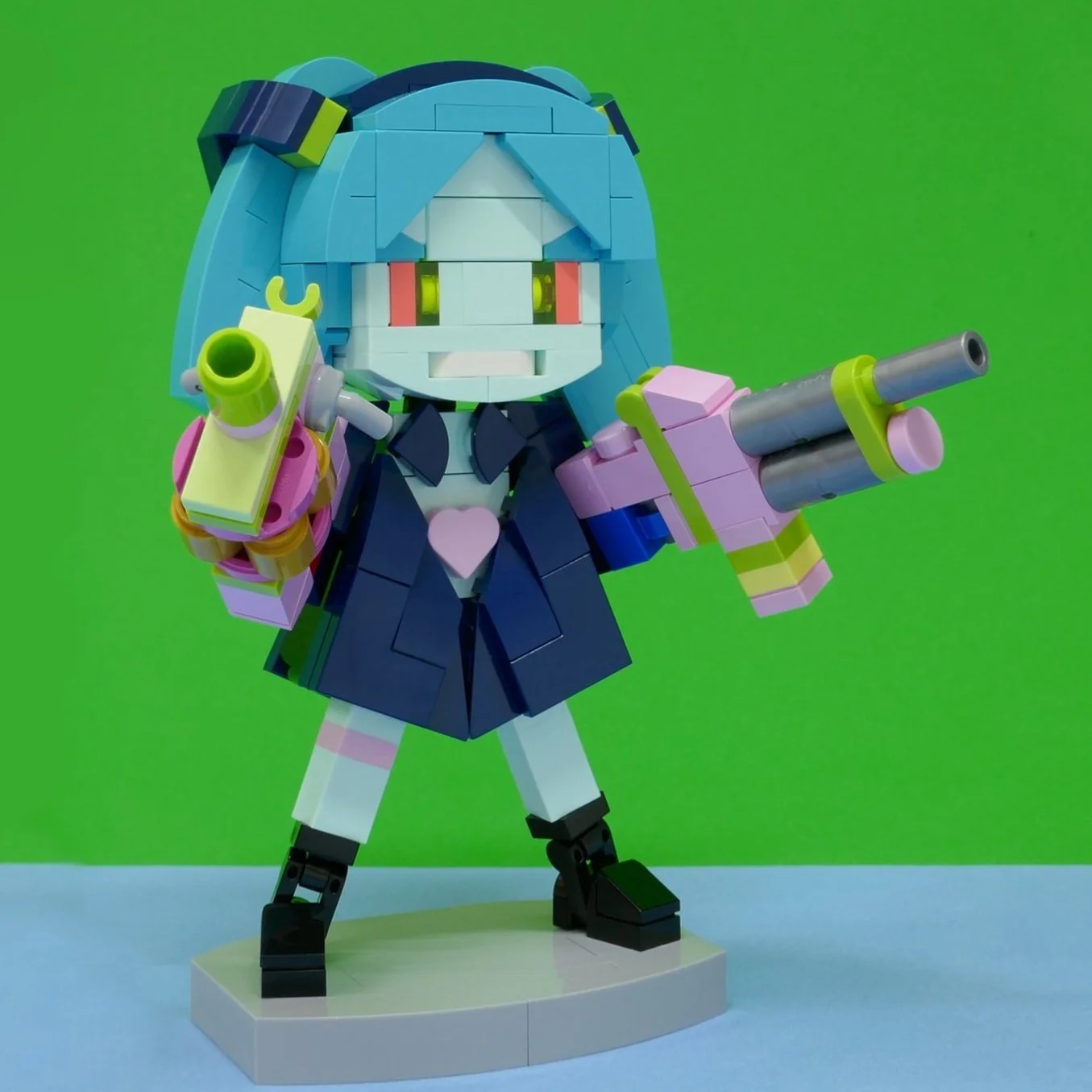Joint Effort: LEGO Joint Techniques for Articulated Builds
/Joints—a topic that I’m sure can stir up some controversy. There are a variety of ways to make them, they are useful in a lot of situations and let’s face it, some of them are just mindblowing. I’m talking, of course, about LEGO joints (you know, as in elbows and knees, etc.)!
If you’ve ever tried to make a brick-built figure, you are no stranger to the fact that making joints (again, elbows and knees and those types of things…not sure what else people might associate with that word…) can be quite a challenge. LEGO, of course, has made quite a few pieces for this purpose over the years (hello ball joints!), but when constructing a character on your own, they aren’t always the smoothest solutions. Plus it is a lot of fun coming up with new ways to simulate natural joints.
But for those of you who may not enjoy “inventing the wheel, “there are plenty of great examples of these types of structures scattered across the old interweb. So let’s have a look at some of them!
Breaking Down LEGO Joints
We’ll start off with an older build from Larry Lars. It features the iconic power loader from Alien and has some great solutions for making the elbows and knees on this beast. The elbows use a simple clip and hinge connection, which works great. The knees are a little more unusual as they rely on an upside-down nozzle connected to a headlight brick. This allows for a pretty impressive range of motion in a very limited space.
Next up, we have a few truly crazy connections by the ever-talented Josephine Monterosso. As with many of her connections, it relies a bit on friction, and those lever-bases can clearly be used in more ways than one. I can’t even identify some of the pieces in this beauty, so I’ll leave it here as an example of… genius… or insanity...? I don’t know, I just know it’s awesome!
Speaking of crazy connections, Josephine has a lot more, so I highly recommend checking her Flickr (or reading her BrickNerd interview about her work). This one is next-next-next level. As far as I can understand, the two paddles are held together by the rubber band, which allows for some flexing. I doubt it’s possible to make a smoother joint than this. However, it may have some problems in terms of structural integrity.
Robert Heim has this great example of joints on a smaller build, too. It uses a variety of pieces to create some pretty great articulation. It looks like he’s used pots, so pretty fitting for the subject of this article I suppose…
Articulation Across MOCs
Moving along, we have this diver by the master of brick-built characters, Eero Okkonen. We’ll have a look at more MOCs from Eero down below, but let’s start with this elbow connection, which is both elegant and useful. It uses two T-pieces to connect with two 1x2 rounded plates with holes. The ends of the T-pieces are then connected to round 2x2s at each end of the elbow. To hide the connections a bi,t there is a claw connected to round 2x2s that is wedged in between the 1x2 plates. Overall, it is a very useful connection.
I’ve used a similar technique with the T-pieces (before the rounded 1x2 plates with holes were released, so I used the Technic equivalent). Those new curved pieces are very useful as they allow for quite a bit of movement along several axes.
Speaking of sci-fi builds, this one by Ilya T. is another example of the versatility of the nozzle-to-clip connection. It allows for a great range of motion, illustrated here in the shoulder joint.
In this roller girl build, Eero uses another variation for the elbow joint. It uses the bar with round plate along with 1x2 rounded plates to form a slick connection that allows for a lot of posability.
Another smooth joint is this DJ (again from Eero). The elbow is the same as showcased previously, but the knees make use of some Technic pieces along with boat studs to create a very nice-looking connection. Although slightly rigid, it does allow for a pretty impressive range of motion.
Applied Techniques For Articulating Builds
Rounding things off, we have a great little connection that I’ve used here for the wrist in this blacksmith build. I’ve used it a couple of times but can’t remember where I first saw it, so apologies for that. It uses two clips connected on each side of a 1x1 brick with studs on each side. A T-piece is then connected to the clips, and the opposing end can connect to another 1x1 brick with studs on the side. This connection is great when you need a bit more strength and still allows for great mobility.
Finally, this is the build that inspired this article. It’s a recent build made for Brickscalibur, where I wanted to make a slightly scaled-up brick-built dwarven figure. I went through MOCs from different builders around the community and found useful connections that I could incorporate into the build to give it a look I was after.
So, to try and save you all a bit of time, I figured I would try to collect a few of my favourites here. I mean, who doesn’t love a good joint? Thanks for having a look, and feel free to drop your best examples down in the comments.
What other joints have you used in your LEGO MOCs? Lets us know in the comments below.
Do you want to help BrickNerd continue publishing articles like this one? Become a top patron like Marc & Liz Puleo, Paige Mueller, Rob Klingberg from Brickstuff, John & Joshua Hanlon from Beyond the Brick, Megan Lum, Andy Price, Lukas Kurth from StoneWars, Wayne Tyler, LeAnna Taylor, Monica Innis, Dan Church, Roxanne Baxter, and Steven Laughlin to show your support, get early access, exclusive swag and more.





























